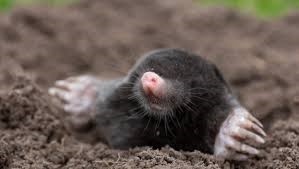
When you think of pests, you might commonly think about pests that invade your home. But do you ever consider pests that invade your yard? In this blog post, discover more about three common yard invaders: moles, voles, and chipmunks.
1. Moles
These pests are small mammals. They often sport black or gray fur and have pink snouts and paws with long nails. Their eyes often have dirt or fur covering them, so while moles can see, they don’t see very well. They find their way around with their noses.
Moles come into yards seeking food. Often, they want grubs or earthworms. In their quest for food, they can leave behind a big mess. Some common signs you have moles in your yard include molehills, increased weed growth, and dying grass or plants. If you see these signs in your yard, you likely have moles.
If so, you should seek treatment for them immediately. Otherwise, your pristine landscape can turn into a hazard zone. Most people think a grub treatment will deter moles, but a main source of food is earthworms which every yard wants. The best solution for moles is to trap them.
2. Voles
Some people mistake this rodent for a mole, but the two couldn’t be more different. Voles look more like mice, albeit somewhat bigger. Their tail is short and are chestnut brown with black on the back.
Voles often love to eat grass and are almost always herbivores. However, they will eat insects and snails. With any of these foods, they often invade yards, as yards are often spacious and open with plenty of grass, flowers, insects, or roots.
Some signs of vole intrusion include holes in your yard, teeth marks on trees, missing flower bulbs, leaning shrubs, or root damage. If you are dismayed when the snow melts and you see surface runways in your grass that is from voles eating the roots of the grass. Voles might also partake of vegetables, so if you have a vegetable garden, this is a place to watch closely too.
If you do have voles in your yard, you can control them. Setting up barriers around gardens, trees, or flowers provide better protection against a vole. The best solution for voles is to find the holes and bait for them.
3. Chipmunks
Chipmunks might look cute, but they can cause extensive damage and potentially carry disease. These critters often have brown fur with stripes on their face and back, as well as white fur underneath their bellies. They are small and fast runners.
They can live in anything from trees and logs to underground tunnels, sometimes up to 30 feet long. Due to the fact of their habit of excavating, they can undermine your driveway and sidewalks, also your plants, grass and flowers. Your perfectly landscaped property can become a treasure trove of food and shelter for these adaptable little pests. They then turn your nice property into their personal playground.
What signs indicate you have more than a few chipmunks? Like with other yard invaders, chipmunks can leave holes in your lawn, chew marks on your home or trees, and messes in your garden. If you notice piles of seeds or grains in hidden places, this can be a sign of chipmunks as well.
If chipmunks have worn out their welcome on your property, then the best thing to do is to call a pest control professional. Lawn maintenance, such as removing clutter and debris or trimming your shrubs and lawn, can help as well, and also putting up barriers. The best thing to do is set up a trapping or management program.
If you have sudden and unwanted yard invaders, turn to Guardian Pest Control. We will identify the type of pest you have, determine the source and extent of their invasion, and provide effective removal services. Get your lawn back with the help of our expert pest control services.
